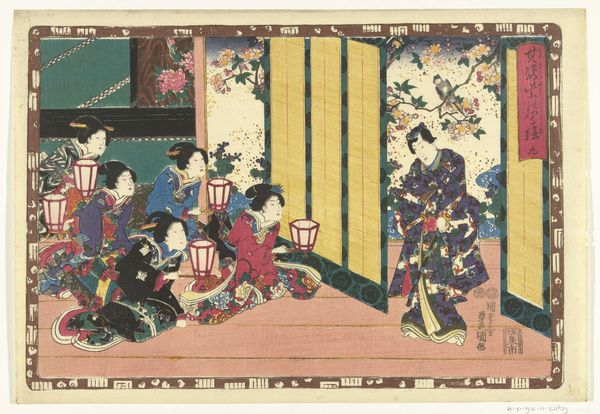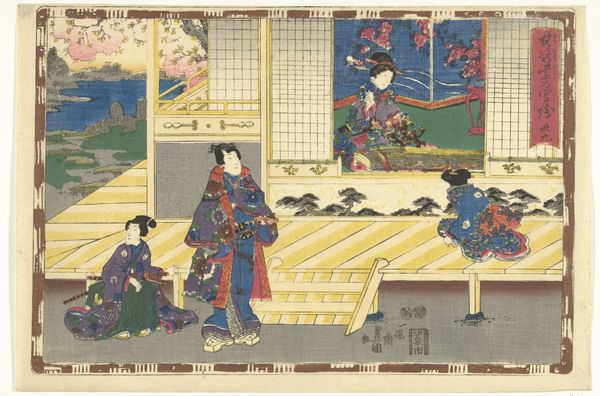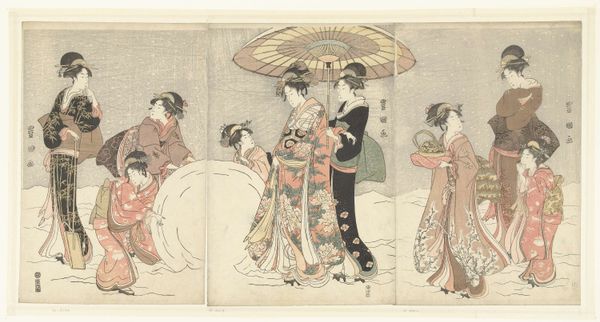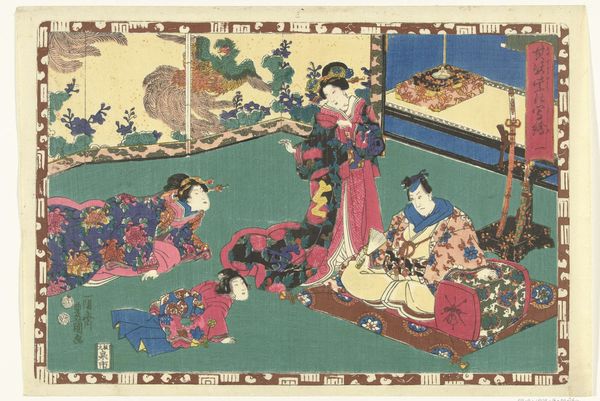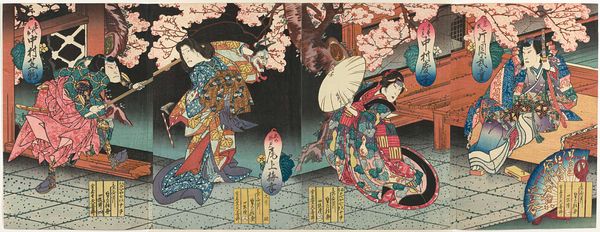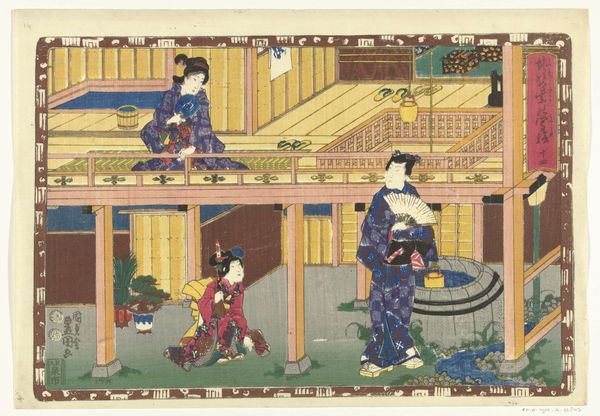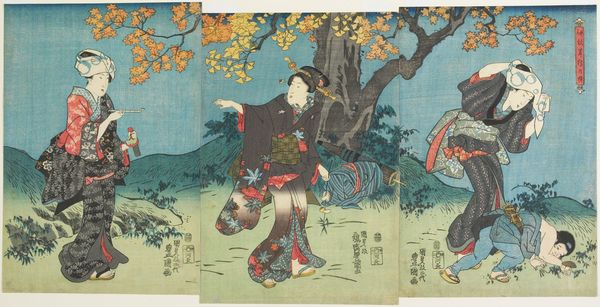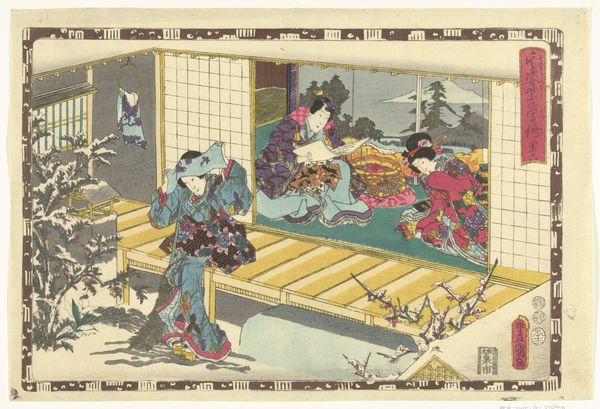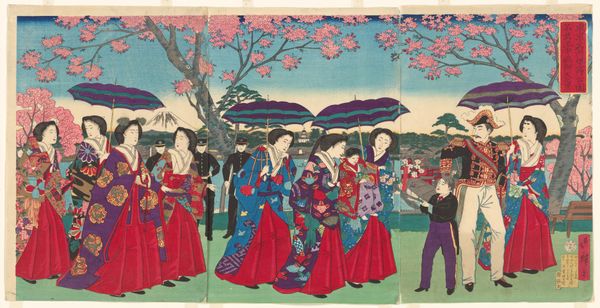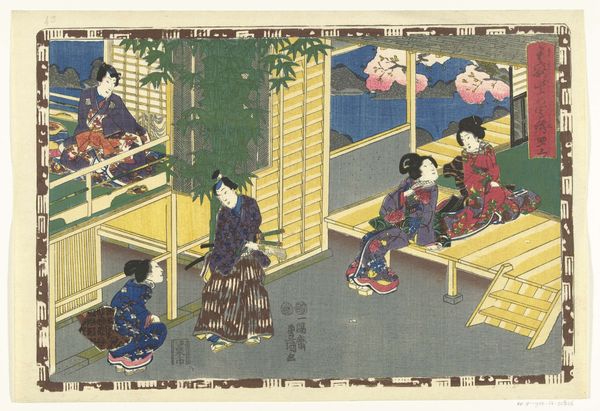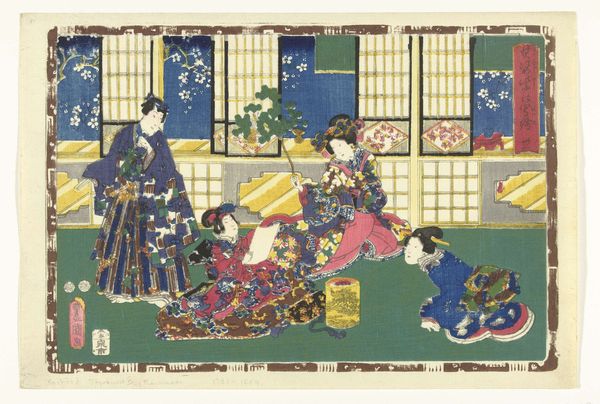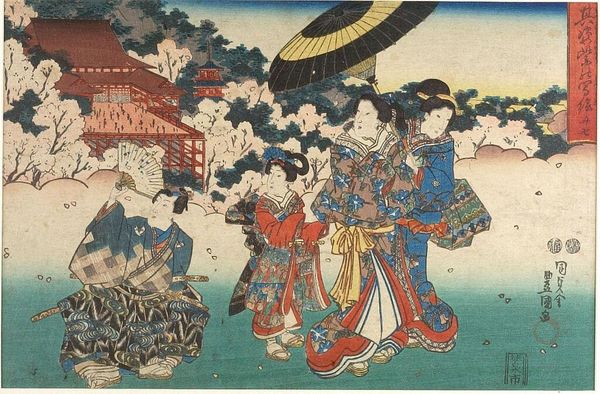
print, woodblock-print
#
portrait
#
garden
# print
#
asian-art
#
landscape
#
ukiyo-e
#
woodblock-print
Dimensions: height 260 mm, width 379 mm
Copyright: Rijks Museum: Open Domain
Editor: This woodblock print, "Hoofdstuk 27," created by Utagawa Kunisada between 1849 and 1853, depicts a scene with figures in a garden setting. It’s currently housed in the Rijksmuseum. I am really struck by the level of detail; the intricate patterns on the kimonos are really interesting. How do you see this work through a materialist lens? Curator: I’m drawn to the socio-economic implications of ukiyo-e prints like this. Consider the production process: woodblock carving, the specific inks used, the paper. These were mass-produced items, affordable entertainment for the merchant class. The patterns on the kimonos, which caught your eye, are not merely decorative, they signify wealth and status attainable by those very merchants. Editor: So, the material making and subject matter catered to a new consumer group? Curator: Exactly. This wasn’t art for the elite, but art *about* a changing social structure and consumption patterns. Think about the labor involved – the artist, the carver, the printer – all contributing to this commodity. The print becomes an object imbued with social narratives, commenting on access, labor, and aspirations. Editor: That's a good point. So, instead of just seeing the scene, we look at what its production reveals? Curator: Precisely. We examine the ‘how’ and ‘for whom’ to understand the ‘what.’ It shifts the focus from artistic genius to the networks of production and consumption in the mid-19th century. And that beautiful garden becomes a staged setting reflecting changing cultural priorities. Editor: This is fascinating! It's a totally different way of considering the piece, revealing how deeply intertwined art is with the economic realities of its time. Curator: It’s about unveiling those hidden connections, seeing art as an active participant in social and material processes. We’ve only scratched the surface, there’s so much more to unpack regarding the materiality of 19th-century print production.
Comments
No comments
Be the first to comment and join the conversation on the ultimate creative platform.
